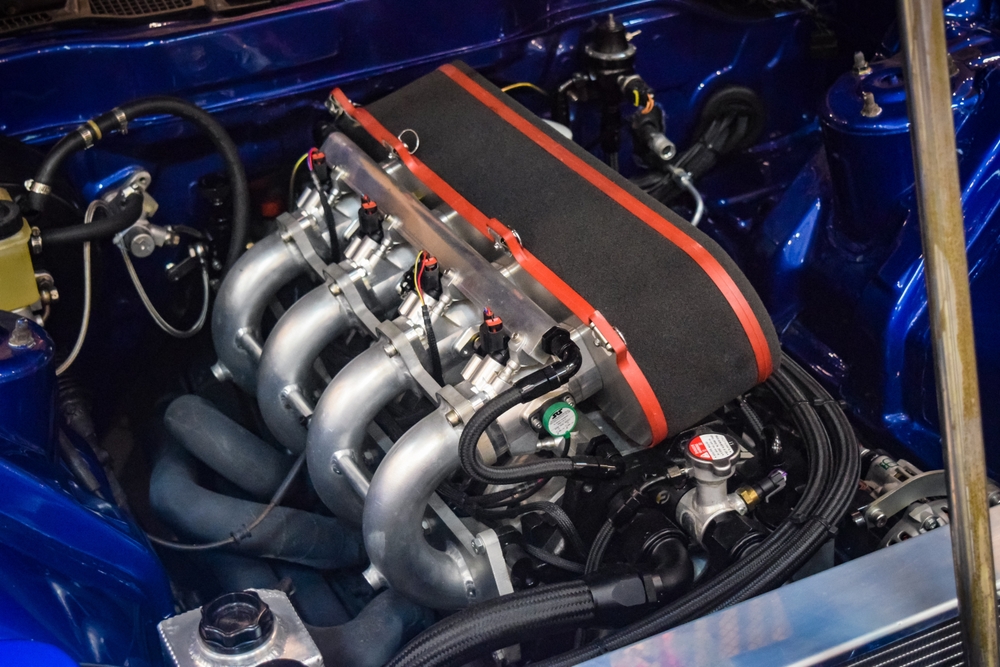Hydraulic Boost: The Silent Powerhouse in Modern Performance Cars
Picture this: You're behind the wheel of a high-performance sports car, effortlessly maneuvering through tight corners and accelerating with breathtaking speed. What you might not realize is that a sophisticated hydraulic system is working tirelessly beneath the hood, amplifying your every input and enhancing the car's capabilities. This often-overlooked technology is revolutionizing the way we experience driving, pushing the boundaries of what's possible on the road and track.

In the 1980s and 1990s, high-performance vehicles began incorporating more advanced hydraulic systems to improve handling and power delivery. These early applications laid the groundwork for the sophisticated hydraulic boost systems we see in today’s cutting-edge sports cars and supercars. The transition from purely mechanical systems to hydraulically assisted ones marked a significant leap forward in automotive engineering, setting the stage for the performance revolution we’re witnessing today.
The Science Behind Hydraulic Boost
At its core, hydraulic boost technology relies on the principles of fluid dynamics. By using incompressible fluids under pressure, these systems can transmit force efficiently and instantaneously throughout the vehicle. This allows for rapid response times and precise control, essential factors in high-performance driving scenarios.
The key components of a hydraulic boost system include a hydraulic pump, fluid reservoirs, control valves, and actuators. The pump generates pressure within the system, while the valves regulate the flow of fluid to various components. Actuators then convert this hydraulic pressure into mechanical force, amplifying the driver’s inputs or responding to electronic signals from the vehicle’s computer systems.
One of the most significant advantages of hydraulic boost is its ability to provide consistent performance regardless of external conditions. Unlike purely mechanical systems, which can be affected by factors such as temperature or wear, hydraulic systems maintain their effectiveness, ensuring reliable operation in even the most demanding situations.
Applications in Modern Performance Vehicles
Today’s high-performance cars utilize hydraulic boost in a variety of innovative ways. One of the most prominent applications is in active suspension systems. By using hydraulic actuators to adjust the suspension in real-time, these systems can optimize the car’s ride and handling characteristics on the fly. This allows for a perfect balance between comfort and performance, adapting to both road conditions and driver preferences instantaneously.
Another area where hydraulic boost shines is in advanced all-wheel drive systems. By using hydraulic pressure to control the distribution of power between the front and rear axles, as well as between individual wheels, these systems can dramatically improve traction and handling. This level of precise control allows for capabilities that were once thought impossible, such as eliminating understeer in high-powered front-wheel-drive vehicles or providing rear-wheel-drive dynamics in all-wheel-drive cars.
Hydraulic boost technology has also found its way into aerodynamic systems. Active spoilers and air brakes, which deploy at high speeds or under heavy braking, often rely on hydraulic actuators for their rapid and powerful movements. This allows performance cars to maintain stability and increase downforce when needed, without compromising their sleek designs at lower speeds.
The Future of Hydraulic Boost in Automotive Engineering
As we look to the future, the potential applications for hydraulic boost technology in automobiles seem limitless. One area of particular interest is in the development of hydraulic hybrid powertrains. These systems use hydraulic accumulators to store energy recovered during braking, which can then be released to provide additional power during acceleration. While still in the experimental stages, this technology could offer significant improvements in both performance and efficiency.
Another exciting prospect is the integration of hydraulic systems with artificial intelligence and advanced sensors. This could lead to cars that not only respond to driver inputs but also anticipate and adapt to changing road conditions and driving situations. Imagine a vehicle that automatically adjusts its suspension, aerodynamics, and power distribution based on real-time data, providing an optimal driving experience in any scenario.
The ongoing development of high-pressure hydraulic systems also holds promise for further performance gains. As engineers push the boundaries of what’s possible with fluid dynamics, we may see even more responsive and powerful hydraulic boost systems in future vehicles. This could lead to cars with faster acceleration, higher cornering speeds, and improved overall performance.
Challenges and Considerations
While the benefits of hydraulic boost technology are clear, there are challenges to overcome. The complexity of these systems can lead to increased maintenance requirements and potential reliability issues. Additionally, the weight of hydraulic components can be a concern in performance applications where every gram counts.
Environmental considerations also play a role in the future of hydraulic systems. As the automotive industry moves towards more sustainable practices, the fluids used in hydraulic systems must evolve to become more environmentally friendly. Biodegradable hydraulic fluids are already in development, promising to reduce the ecological impact of these high-performance systems.
Conclusion: The Unsung Hero of Automotive Performance
Hydraulic boost technology may not be the most glamorous aspect of modern performance cars, but its impact cannot be overstated. By harnessing the power of fluid dynamics, automotive engineers have unlocked new levels of performance, control, and adaptability. As this technology continues to evolve, we can expect to see even more impressive capabilities from our vehicles, pushing the boundaries of what’s possible on four wheels. The next time you experience the thrill of a high-performance car, remember that beneath the surface, a sophisticated hydraulic system is working tirelessly to enhance your driving experience.




